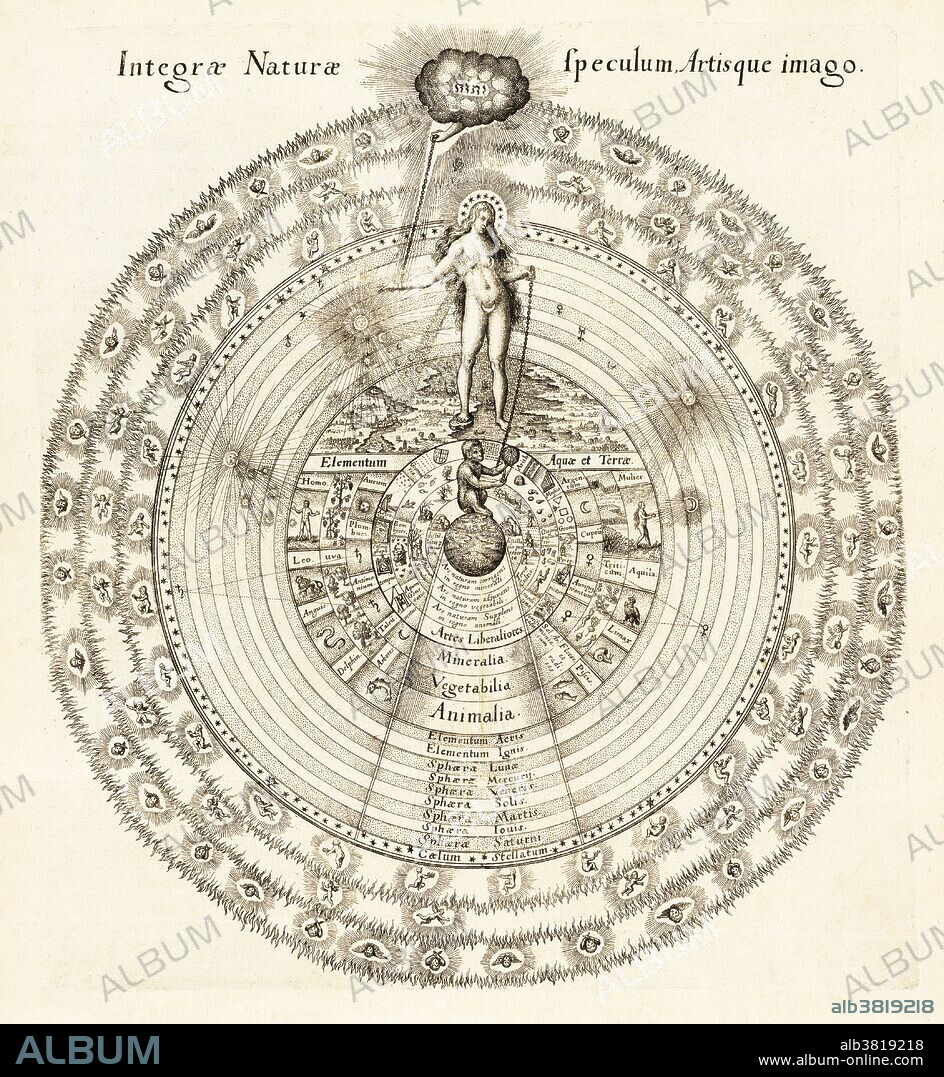alb3819218
Cosmology, Fludd's Integrae Naturae, 1617

|
Ajouter à une autre Lightbox |
|
Ajouter à une autre Lightbox |



Avez-vous déjà un compte? S'identifier
Vous n'avez pas de compte ? S'inscrire
Acheter cette image

Titre:
Cosmology, Fludd's Integrae Naturae, 1617
Légende:
Voir la traduction automatique
Integrae Naturae, by Robert Fludd. During the 16th and 17th centuries, notions of macrocosm and microcosm were widely accepted. Many people believed that the same patterns found in the human body on a small scale (microcosm) are found in the natural universe as a whole (macrocosm). Here, a nude female figure representing the world's soul is chained on the right hand to God and on the left to a monkey representing man; astrological and alchemical symbols fill the inner circles, while the hierarchy of angels form outer circles. Robert Fludd, also known as Robertus de Fluctibus (1574-1637) was an English physician, astrologer, and mystic. His philosophy is presented in Utriusque Cosmi, Maioris scilicet et Minoris, metaphysica, physica, atque technica Historia (The metaphysical, physical, and technical history of the two worlds, namely the greater and the lesser), published in Germany between 1617 and 1621.
Crédit:
Album / Science Source / Getty Research Institute
Autorisations:
Modèle: Non - Propriété: Non
Questions sur les droits?
Questions sur les droits?
Taille de l'image:
4152 x 4505 px | 53.5 MB
Taille d'impression:
35.2 x 38.1 cm | 13.8 x 15.0 in (300 dpi)
Mots clés:
ALCHIMIE • ASTROLOGIE • COSMOLOGIE • DÉNUDÉ • FRONTISPICE • HOMME • ILLUSTRATION • METAPHYSIQUE • NU • NUS • SCIENCE: ASTROLOGIE • ZODIAQUE, ASTROLOGIE
 Pinterest
Pinterest Twitter
Twitter Facebook
Facebook Copier le lien
Copier le lien Email
Email
